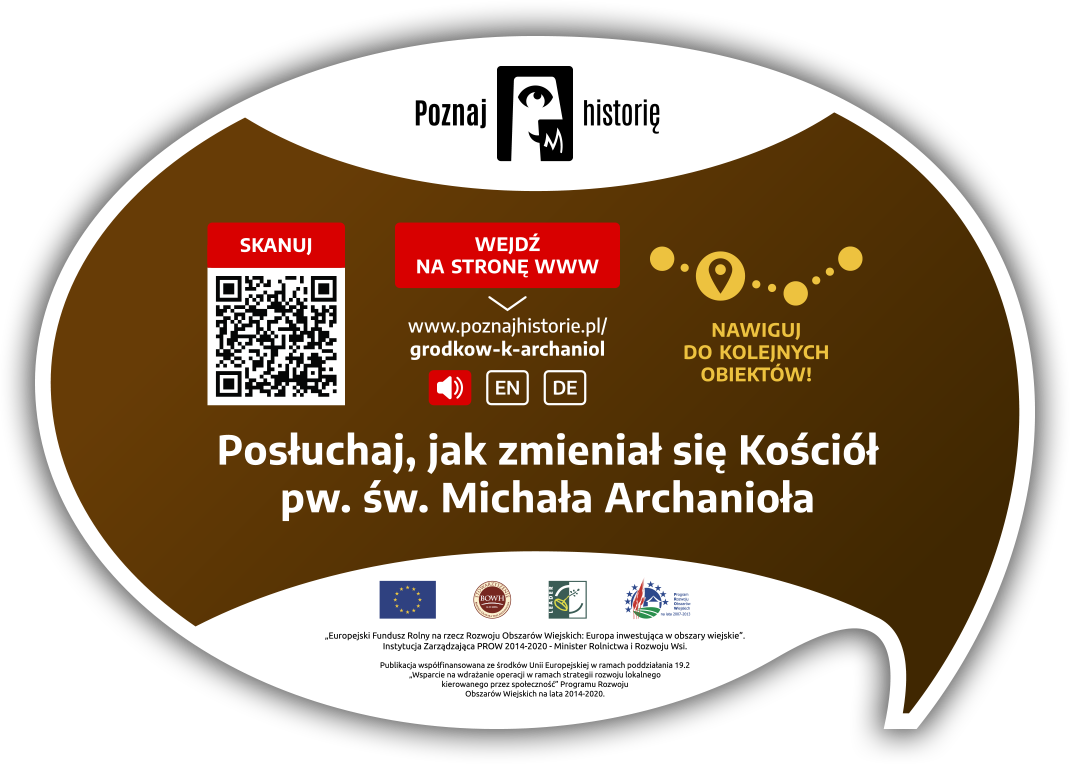Z tego czasu pochodzi wczesnogotyckie prezbiterium kościoła. Jego fundatorem był najprawdopodobniej książę Henryk IV Probus lub założyciel miasta komes Mroczko z Pogorzelów.
Zbudowano go jako trójnawową, orientowaną bazylikę. Świątynia jest murowana z cegły, oskarpowana, z ostrołukowymi otworami okiennymi, w których znajdują się zrekonstruowane maswerki - czyli wzory dekoracyjne w górnej części okna oraz piękne witraże. Od zachodu do korpusu dostawiona jest masywna czworoboczna wieża.
Pozostałością po gotyckim wystroju wnętrza są sedillia, czyli miejsce dla służby liturgicznej oraz ścienne tabernakulum z datą 1522. Obecnie można podziwiać je częściowo zrekonstruowane. Ponadto w kościele znajduje się wyposażenie renesansowe i barokowe z XVII wieku - w tym prospekt organowy i obraz Alegoria Kościoła i Sakramentów. Późnobarokowy ołtarz główny wykonali w 1728 r. rzeźbiarz Michael Kössler ze Szwaben, malarz Melchior Franziskus Ansi, a także... dziadek grodkowskiego kompozytora Józefa Elsnera. W nawie południowej natomiast znajduje się piękny renesansowy tryptyk z 1600 roku. Przedstawia scenę adoracji w polu środkowym, Zwiastowania i pokłonu trzech króli oraz Nawiedzenia i Obrzezania w polach bocznych. W kościele zachował się również zespół płyt nagrobnych i epitafijnych. Najstarsza z nich, późnogotycka, pochodzi z 1513 roku.
Nie sposób nie wspomnieć o kościelnych organach, bo są one dumą parafii. Pierwotnie powstały w roku 1596, jednak pół wieku później ucierpiały od uderzenia pioruna. Wraz z odbudową kościoła powstały nowe organy. Instrument posiadał sekcję Hauptwerku i pedału, a grający organista siedział tyłem do ołtarza.
Zmiany wymuszały także tragedie. Jedną z nich był wielki pożar z 1449 roku. Podczas napraw podwyższono mury prezbiterium, wstawiając dodatkową kondygnację oświetlaną własnymi oknami. Kolejna znaczna przebudowa nastąpiła około roku 1671. Tym razem przyczyniła się do niej wojna trzydziestoletnia. Założono wówczas między innymi sklepienia w korpusie nawowym. Warto nadmienić, że odnowa kościoła była możliwa dzięki staraniom biskupa Sebastiana Rostocka. To rodowity grodkowianin, który został nie tylko biskupem wrocławskim, ale także przyznano mu zaszczytną funkcją starosty generalnego Śląska. W 1893 roku nastąpił remont i częściowa regotyzacja świątyni. Odnowiono żebra sklepienia nawy głównej, oraz część maswerków okiennych.










Visit Social media:
Share Social media: